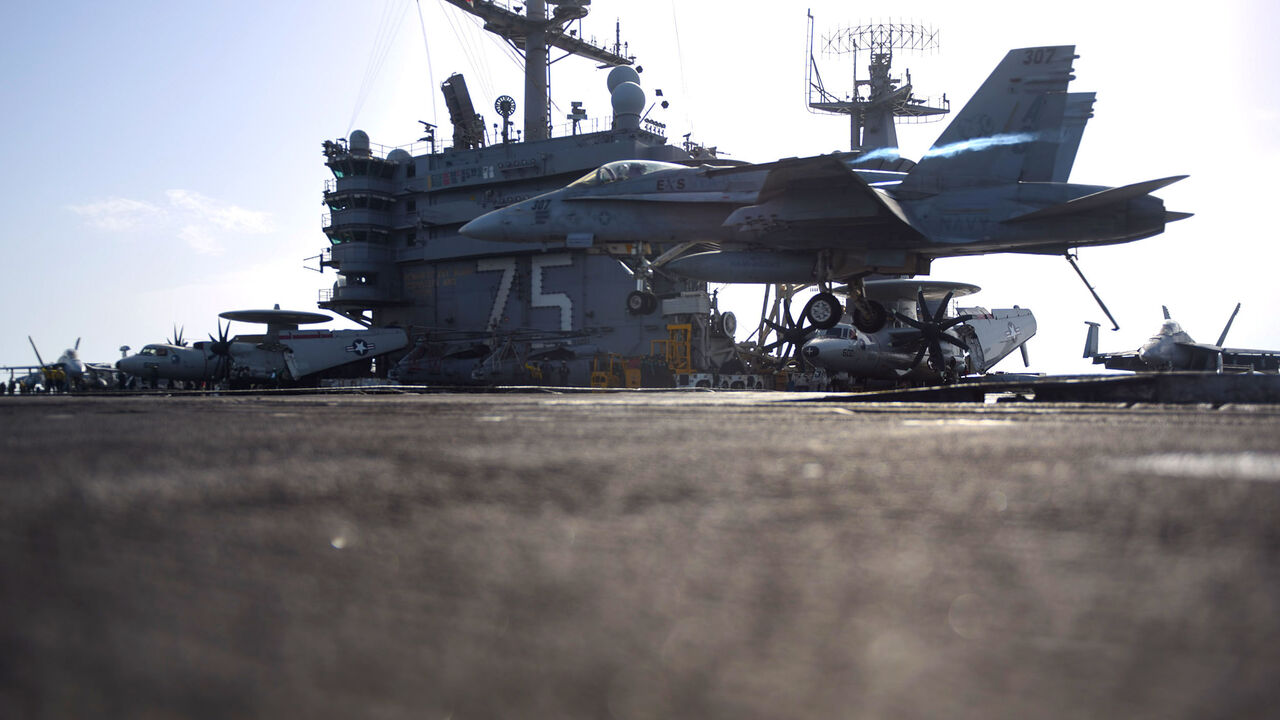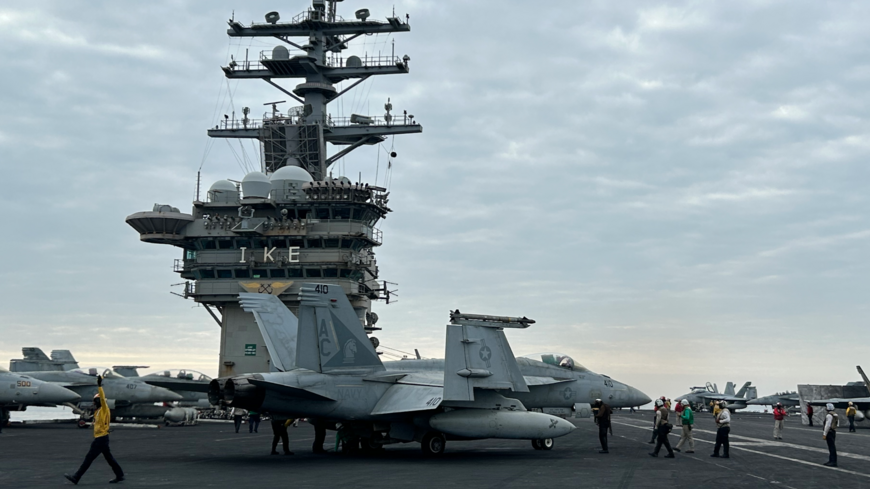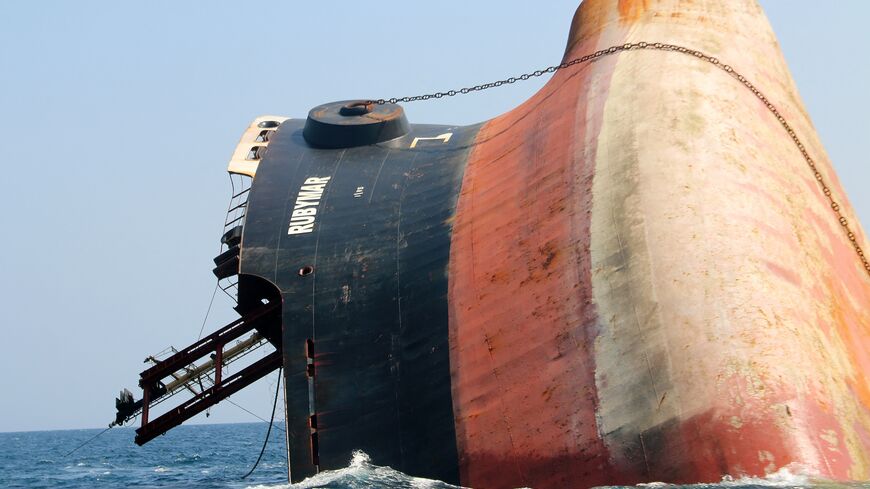US deterrence challenged as prolonged Israel-Hamas conflict strains Navy
The defensive campaign is also putting strain on the US Navy, as the fleet’s second-oldest aircraft carrier, the USS Eisenhower, passes eight months at sea, costing roughly a billion dollars in munitions alone, while cutting into the military’s stockpile of valuable missile interceptors.

This is an excerpt from Security Briefing, Al-Monitor's weekly newsletter covering defense and conflict developments in the Middle East. To get Security Briefing in your inbox, sign up here.
WASHINGTON – In the early months of Israel’s campaign in Gaza, Pentagon officials touted their success in deterring Iran’s proxies from dragging the broader region into all-out conflict.
Yet nearly nine months into the Gaza war, the seams along key fault lines across the Middle East are being increasingly rent apart.
Repeated waves of US and UK airstrikes in Yemen have failed to disable the Houthis’ lethal missile attacks on commercial shipping in the Red Sea. The Yemeni rebels last week struck two additional cargo vessels, forcing their crews to abandon ship. One of them, the M/V Tutor, sank over the weekend, days after French and US Navy helicopter teams helped its Filipino crew evacuate. One civilian mariner remains lost at sea.
The United States launched additional airstrikes against what US Central Command described as Houthi radar sites and command-and-control nodes in response. But the effort, along with allied naval escorts meant to deter attacks, has failed to restore the global shipping industry’s faith in the safety of Red Sea transit, a new US Defense Intelligence Agency report indicated this week.
The defensive campaign is also putting strain on the US Navy, as the fleet’s second-oldest aircraft carrier, the USS Eisenhower, passes eight months at sea, costing roughly a billion dollars in munitions alone, while cutting into the military’s stockpile of valuable missile interceptors.
Meanwhile, Israeli leaders are threatening Lebanon’s Hezbollah with an offensive. Experts and former officials say such an attack would likely trigger a war that would dwarf the destruction already wrought in Gaza. A limited Israeli campaign to push the Lebanese militia back from the border, per Security Council resolution 1701, by force is likely unfeasible, military analysts say.
American military flexing and round-the-clock diplomatic visits by top Biden administration envoys have thus far failed to arrest the cycle of violence.
Amos Hochstein, Washington’s diplomatic point man tasked by the White House with negotiating an end to the crisis, visited Beirut earlier this week to promote a proposal that would entail Hezbollah’s elite Radwan force pulling back from the border area and the Lebanese Armed Forces (LAF) deploying to bolster the existing UN peacekeeping mission in a buffer zone, as Al-Monitor previously reported.
But the LAF needs funding and supplies to train and equip at least 6,000 more soldiers for the plan, sources close to the negotiations told Al-Monitor. And concerns remain that Hezbollah may demand a high price in exchange for any withdrawal.
Further complicating matters, officials in Washington see a cease-fire in Gaza as a necessary, albeit not sufficient, first step to de-escalate both in the Red Sea and along Lebanon’s southern border. That’s largely because the Houthis and Hezbollah have vowed not to halt their attacks until Israel ends its war in Gaza.
Backed by Iran, the Houthis and Hezbollah have built up massive arsenals of lethal projectiles, which are unlikely to be decimated in the near term short of an all-out war — something the Biden administration has sought to avoid.
Thus far, the administration’s efforts to rally international diplomatic pressure and economic sanctions on the two militias to compel them to halt their attacks have failed.
That means Hezbollah and the Houthis are likely to maintain something of a veto over Washington’s security designs in the region for the foreseeable future, experts say.
“We're lacking non-kinetic tools,” David Schenker, who served as the State Department's top diplomat for the Middle East during the Trump administration, told Al-Monitor. “Hezbollah is de-banked. This is a cash economy that Hezbollah thrives on.”
Critics of the administration’s approach point to what they see as asymmetry between its goal of de-escalation and Iran and its proxies’ willingness to escalate militarily.
“If avoiding escalation is the highest US priority, then it is only logical to withdraw our forces from the region,” the former top US military commander in the Middle East, retired CENTCOM commander Gen. Frank McKenzie, argued in a Wall Street Journal op-ed earlier this year.
But both former officials and experts agree: The risk of descent into wider regional conflict is real.
On Thursday, Hezbollah chief Hassan Nasrallah warned that should such a conflict break out, “no place” would be safe within Israel from the militia’s massive projectile arsenal. He also went so far as to threaten Cyprus should its leaders allow Israel to use its territory at all in a conflict with Hezbollah.
“Hezbollah is now seen as an existential problem. You’re not going to dissuade Israel" from launching a campaign to degrade Hezbollah, Schenker said.






